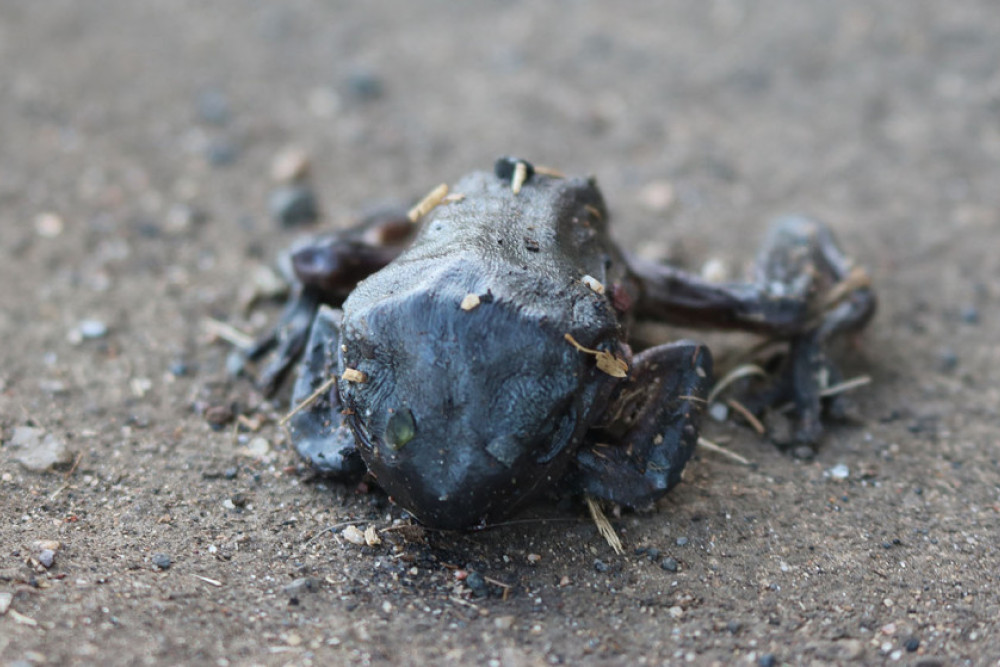21 July, 2022
Scientists foggy about dying froggies
Residents of the Clifton area who have noticed a lot of dying and dead frogs around lately are not alone, with the phenomenon occurring around the country and it’s stumping scientists.

Jodi Rowley, Curator, Amphibian & Reptile Conservation Biology, Australian Museum, UNSW Sydney and Karrie Rose, Australian Registry of Wildlife Health - Taronga Conservation Society Australia, University of Sydney, have been investigating the mysterious situation as they have been hearing from concerned people across Australia.
Locally, you could assume the wet and cold weather have had an impact, however scientists are looking at a number of causes.
Ms Rowley and Ms Rose said there were thousands of dead and dying frogs nationwide last winter in places they are not usually seen including footpaths, highways and doorsteps.
They have also been found unusually in direct sunlight.
“These frogs were often thin, slow moving, and with dark patches on their back or red bellies,” they said.
“They were seeking water in pet bowls or pot plants. And they usually died in a matter of hours.
“A crash in frog populations could have very real consequences, particularly for already threatened frog species, and the importance of frogs in both freshwater and land systems means it can also impact entire ecosystems.”
So, what is causing the deaths?
Universities and government biosecurity and environmental agencies have put their heads together to find the cause.
“It’s a murder mystery, and there are so many possible suspects. We’ve been testing for parasitic, bacterial, viral and fungal pathogens,” the scientists said.
“These tests include looking for pathogens known to kill frogs, and also looking for possible novel pathogens, which is by far the harder task.
“The potential role of toxins is also being assessed.”
Although the reports died off as summer came, they have been back again this year, including from Sydney’s north shore and western suburbs and closer to home in Warwick, where green tree frogs have been found discoloured, hunched up and sitting in the open.
Over 1,600 people have reported finding sick or dead frogs.
“Although most sick and dead frogs reported were green tree frogs, this is likely because this species tends to hang around houses and be spotted more. Frog species less tolerant of suburbia are far less likely to be seen,” Ms Rowley and Ms Rose said.
“Despite this, more than 40 species were reported, including threatened species.”
HOW YOU CAN HELP
To help the experts understand the scale and cause of any frog deaths this winter, please send any reports of sick or dead frogs to the Australian Museum’s citizen science project FrogID via calls@frogid.net.au
Include the location and if possible, photos of the frog(s).
To help determine the impact of frog deaths on Australia’s frogs, and which species are likely to need our help the most, download the free FrogID app and record calling frogs whenever you can.
Every recording will help to better understand and conserve Australia’s frogs.


